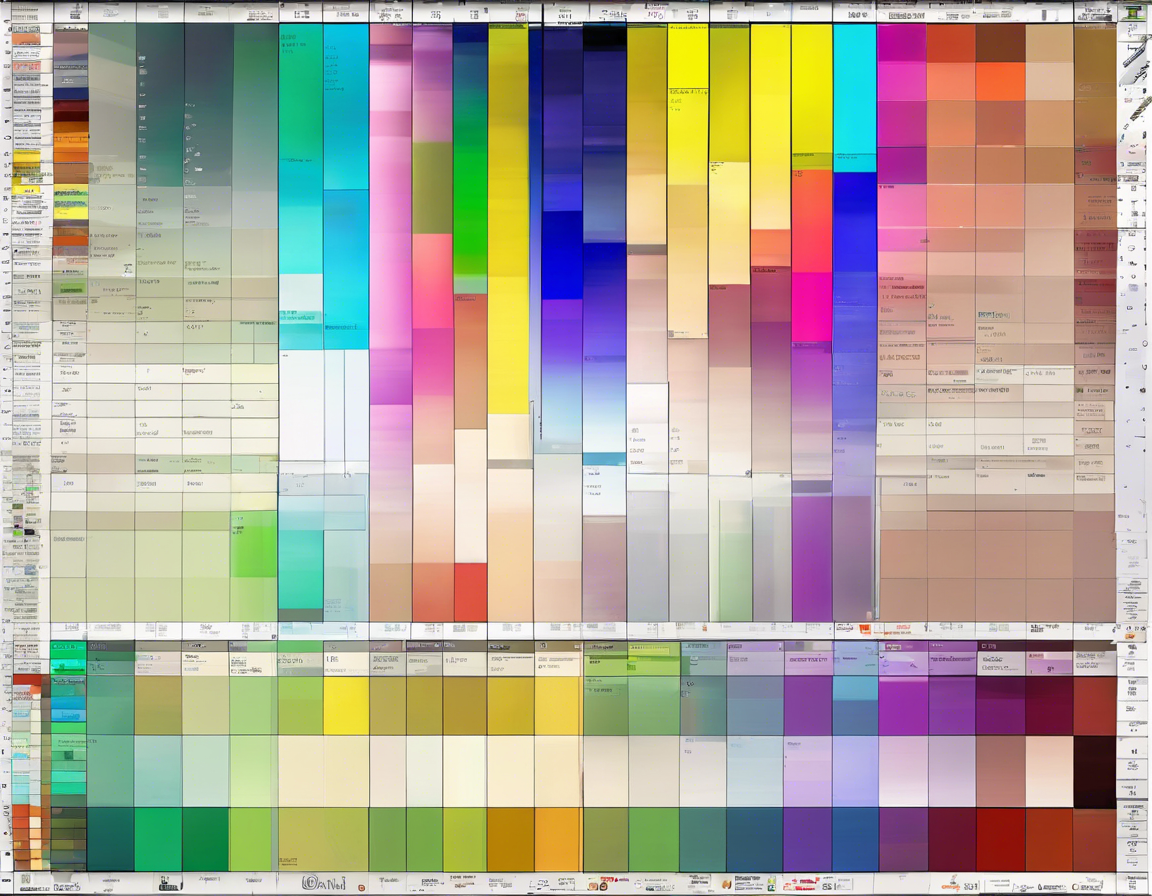When delving into the world of trading, there are many tools and resources available to assist traders in making informed decisions. One of the key tools is the color trading chart, which displays price movements of various financial assets over a specific period. Understanding how to read and interpret these charts is essential for any beginner trader looking to succeed in the financial markets. In this guide, we will explore the ins and outs of color trading charts, including their different types, components, and how to effectively use them for trading.
Types of Color Trading Charts
There are several types of color trading charts commonly used in the financial markets. The three most popular types are line charts, bar charts, and candlestick charts. Each chart type presents price data in a different format, allowing traders to analyze and interpret the information in various ways.
Line Charts
Line charts are the most basic type of color trading chart and are created by connecting a series of data points with a continuous line. They display the closing prices of an asset over a specified time period. Line charts provide a clear and simple representation of price trends and patterns.
Bar Charts
Bar charts display price movements using vertical bars. Each bar represents the trading range of an asset over a specified time frame, with the top of the bar indicating the highest price reached, and the bottom showing the lowest price. Bar charts also include opening and closing prices, making it easy to identify trends and patterns.
Candlestick Charts
Candlestick charts are the most widely used type of color trading chart among traders. They provide more detailed information compared to line and bar charts. Each candlestick represents the trading range, opening, closing, and direction of price movement for a specific time period. Candlestick charts are effective in identifying market sentiment and potential trend reversals.
Components of a Color Trading Chart
Regardless of the chart type, all color trading charts consist of several key components that help traders analyze price movements and make trading decisions. These components include:
-
Price Axis: The vertical axis on the left side of the chart that represents the price of the asset.
-
Time Axis: The horizontal axis along the bottom of the chart that shows the time period being analyzed.
-
Candles or Bars: The main body of the chart that represents the price range between the opening and closing prices.
-
Wicks or Shadows: The thin lines extending from the top and bottom of the candles or bars that show the highest and lowest prices reached during the time period.
-
Volume: The bar or line chart displayed beneath the price chart that represents the trading volume for the asset.
How to Use Color Trading Charts for Trading
Now that we have covered the different types and components of color trading charts, let’s discuss how to effectively use them for trading. Here are some key tips for utilizing color trading charts in your trading strategy:
-
Identify Trends: Use trendlines and moving averages on the chart to identify and follow trends in price movements.
-
Spot Patterns: Look for common chart patterns such as head and shoulders, double tops, and triangles to predict potential price reversals or continuations.
-
Use Support and Resistance Levels: Identify key support and resistance levels on the chart to determine entry and exit points for trades.
-
Combine with Technical Indicators: Use technical indicators such as RSI, MACD, and Bollinger Bands in conjunction with color trading charts to confirm trading signals.
-
Practice Risk Management: Set stop-loss orders based on the information displayed on the chart to manage risk and protect your capital.
By incorporating these strategies into your trading approach, you can leverage the power of color trading charts to make informed trading decisions and improve your overall trading performance.
Frequently Asked Questions (FAQs)
Q1: What is the best type of color trading chart for beginners to start with?
A1: Line charts are the simplest and most straightforward type of chart for beginners to understand.
Q2: How often should I check color trading charts when trading?
A2: It depends on your trading style, but most traders check charts daily or several times a day.
Q3: Can color trading charts predict future price movements accurately?
A3: While charts can provide valuable insights, they are not foolproof and should be used in conjunction with other analysis tools.
Q4: How far back should I look on a color trading chart for historical data?
A4: It’s recommended to look back at least several months of data to identify long-term trends and patterns.
Q5: Are there any free resources available for learning how to read color trading charts?
A5: Yes, there are numerous online tutorials, webinars, and articles that provide comprehensive guidance on reading and interpreting color trading charts.
In conclusion, mastering the art of reading and interpreting color trading charts is essential for any trader looking to succeed in the financial markets. By familiarizing yourself with the different chart types, components, and strategies for using color trading charts, you can enhance your trading skills and make more informed decisions when buying and selling assets. Remember to practice regularly and stay updated on market trends to improve your chart analysis skills over time.
